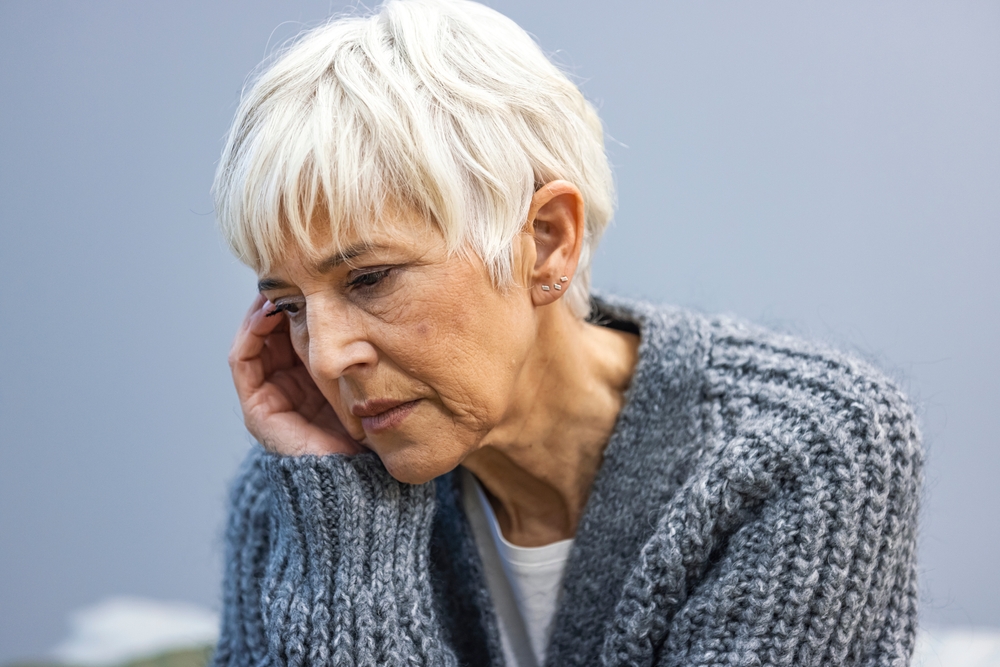In all age groups, antidepressant use was higher among women than among men in the years 2015 to 2018. Nearly one-quarter of women older than 60 who were surveyed reported taking antidepressant medication.
This was one statistic from a data brief released from the National Center for Health Statistics (NCHS), part of the US Department of Health and Human Services (HHS).
During the years 2015 to 2018, 13.2% of adults reported that they had used antidepressants in the past 30 days. Use was higher among women (17.7%) than men (8.4%).
Clinicians Often Miss Depression Symptoms for Certain Groups
Women especially susceptible
The brief cited the additional finding from the Substance Abuse and Mental Health Services Administration that, in 2018, an estimated 7.2% of American adults had experienced a major depressive episode in the preceding year and noted that depression is associated with diminished quality of life and increased disability.
A previously published NCHS data brief had revealed that women (10.4%) were almost twice as likely as men (5.5%) to have had depression and that women are 2 to 3 times more likely than men to develop depression. Overall, the earlier brief reported that 1 in 8 women experience depression in their lifetime—twice the rate as men.
The Anxiety & Depression Association of America (ADAA) offers concurrent findings that depression occurs more often in women than men. Further, the organization states that some differences in how a patient’s depressed mood manifests itself have been found to be based on both gender and age.
“In men, [depression] manifests often as tiredness, irritability, and anger. They may show more reckless behavior and abuse drugs and alcohol. They also tend to not recognize that they are depressed and fail to seek help. By contrast, in women, “depression tends to manifest as sadness, worthlessness, and guilt.”
Age, education, and the blues
The most recent NCHS brief also showed that for both men and women, rates of antidepressant use increased with age. Among women, antidepressant use rose from 10.3% among those aged 18 to 39 to 24.3% among women aged 60 and older.
Among the survey questions were queries pertaining to education level. Overall, the percentage of adults who reported taking antidepressants in the past 30 days was lower among those with less than a high school education—or only a high school education—than among those who attended college.
Among men, those reporting the highest use were those with at least some college education (9.6%). Antidepressant use among women, however, did not differ significantly by level of education. Usage by women of all education levels was higher than use by men.
Compared to findings from the previously published data brief, the most recent data showed that the percentage of adults who used antidepressants increased among women, but not men. The percentage of women taking antidepressant medication was higher at all points over the period from 2009-2010 to 2017-2018 than the percentage of men consuming such medications.
Reporting by race
Non-Hispanic whites reported the highest rate of antidepressant use (16.6%), followed by non-Hispanic blacks (7.8%), Hispanics (6.5%), and non-Hispanic Asians (2.8%). Usage was highest among non-Hispanic white women (22.3%).
The percentage of antidepressant use was higher among women than men for all racial groups except for non-Hispanic Asians, among whom the difference did not reach statistical significance according to the data brief.
Means and methods
The data were collected though the National Health and Nutrition Examination Survey (NHANES), a continuous survey conducted to assess the health and nutrition of Americans. It is designed to be nationally representative of the civilian non-institutionalized population, according to NCHS. NHANES data from 2009-2010 through 2017-2018 were used for these analyses.
Survey participants completed a household interview and visited a mobile examination center for a standardized physical examination. During the household interview, participants were asked if they had taken any prescription drug in the past 30 days. Those who answered “yes” were asked to show the interviewer the medication containers of all prescription drugs. For each drug reported, the interviewer recorded the product’s complete name from the container or pharmacy list, if available. Of the 11,848 adults aged 18 and over who participated in the household interview during NHANES 2015–2018, 11,704 persons provided such specific information on their prescription medication use.
Find the full brief “Antidepressant Use Among Adults: United States, 2015–2018. NCHS Data Brief, No. 377,” at https://www.cdc.gov/nchs/products/databriefs/db377.htm
Clinicians’ Bonus: More To Know
Resources for you and your patients
For You
The National Institute of Mental Health provides detailed and helpful guides for common depressive disorders, including major depression, postpartum depression, and seasonal affective disorder.
MentalHealth.gov is one-stop website for US government mental health resources operated by the Department of Health and Human Services (HHS). It features guides and other content about depression and other common mental health disorders.
For Your Patients
The Centers for Disease Control and Prevention (CDC) maintains a small but supportive collection of online depression resources, including guides for dealing with stress and coping with difficulties in life.
The Anxiety and Depression Association of America (ADAA) is a nonprofit organization dedicated to increasing awareness and promoting the diagnosis and treatment of both depression and anxiety. The ADAA offers several online resources for depression, including useful guides to help your patients understand depression and anxiety and provides tools for finding help.
NIH’s National Institute of Mental Health offers the patient-directed resource “Tips for Talking With a Health Care Provider About Your Mental Health” which provides practical advice in 5 steps to prepare and guide your patients on talking to a health care provider about their mental health and how to get the most out of their visit.
The contents of this feature are not provided or reviewed by NPWH.

